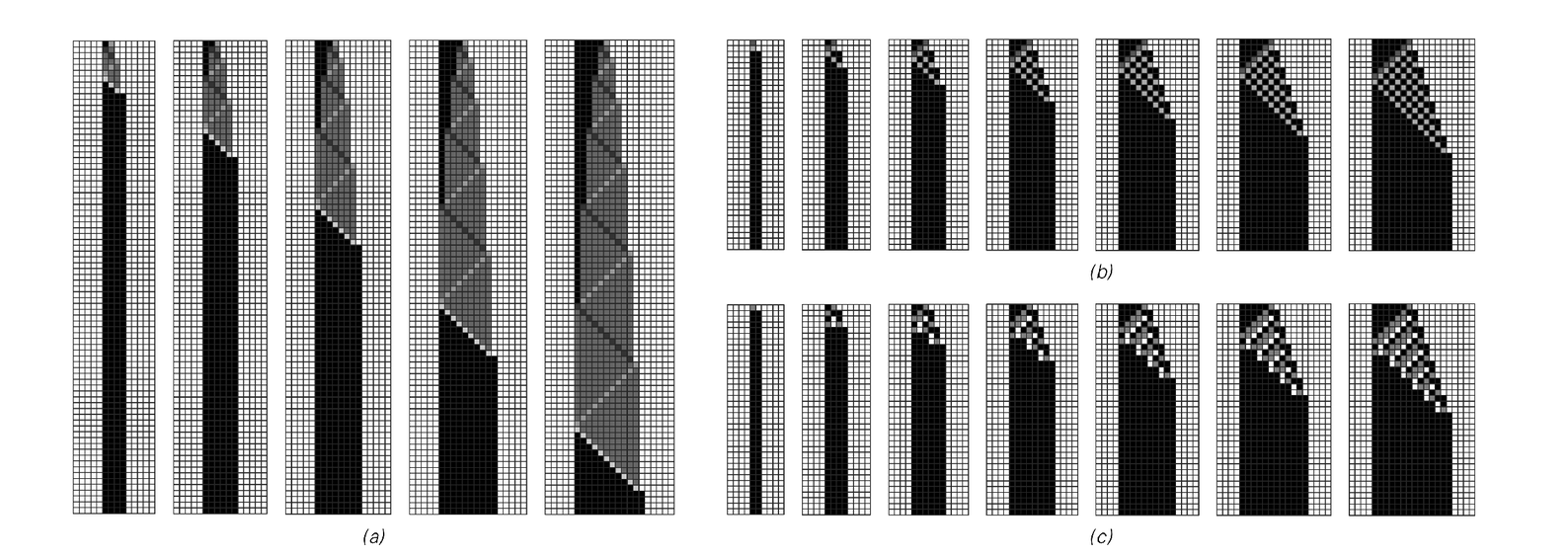rules turn out to be far from minimal. For case (b) gets its results much more quickly—in effect by operating in parallel—and its rules involve four possible colors rather than six.
But is case (b) really the minimal cellular automaton that achieves the purpose of doubling its input? Just thinking about it, one might not be able to come up with anything better. But if one in effect explicitly searches all 8 trillion or so rules that involve less than four colors, it turns out that one can find 4277 three-color rules that work.
The pictures on the facing page show a few typical examples.
Each uses at least a slightly different scheme, but all achieve the same purpose of doubling their input. Yet often they operate in ways that seem considerably more complex than most familiar artifacts. And indeed some of the examples might look to us more like systems that just occur in nature than like artifacts.
But the point is that with sufficiently advanced technology one might expect that doubling of input would be implemented using a rule that is in some sense optimal. Different criteria for optimality could lead to different rules, but usually they will be rules like those on the facing page—and sometimes rules with quite complex behavior.
But now the question is if one were just to encounter such a rule, would one be able to guess that it was created for a purpose? After all,

Examples of cellular automata that can be viewed as achieving the purpose of doubling the width of the pattern given in their input. Rule (a) involves 6 colors, and works sequentially, much as a typical traditional engineering system might. Rule (b) involves 4 colors, and works in parallel. Rule (c) was found by a large search, and involves only 3 colors. It takes the fewest steps of any 3-color rule to generate its result. Its rule number is 5407067979.



